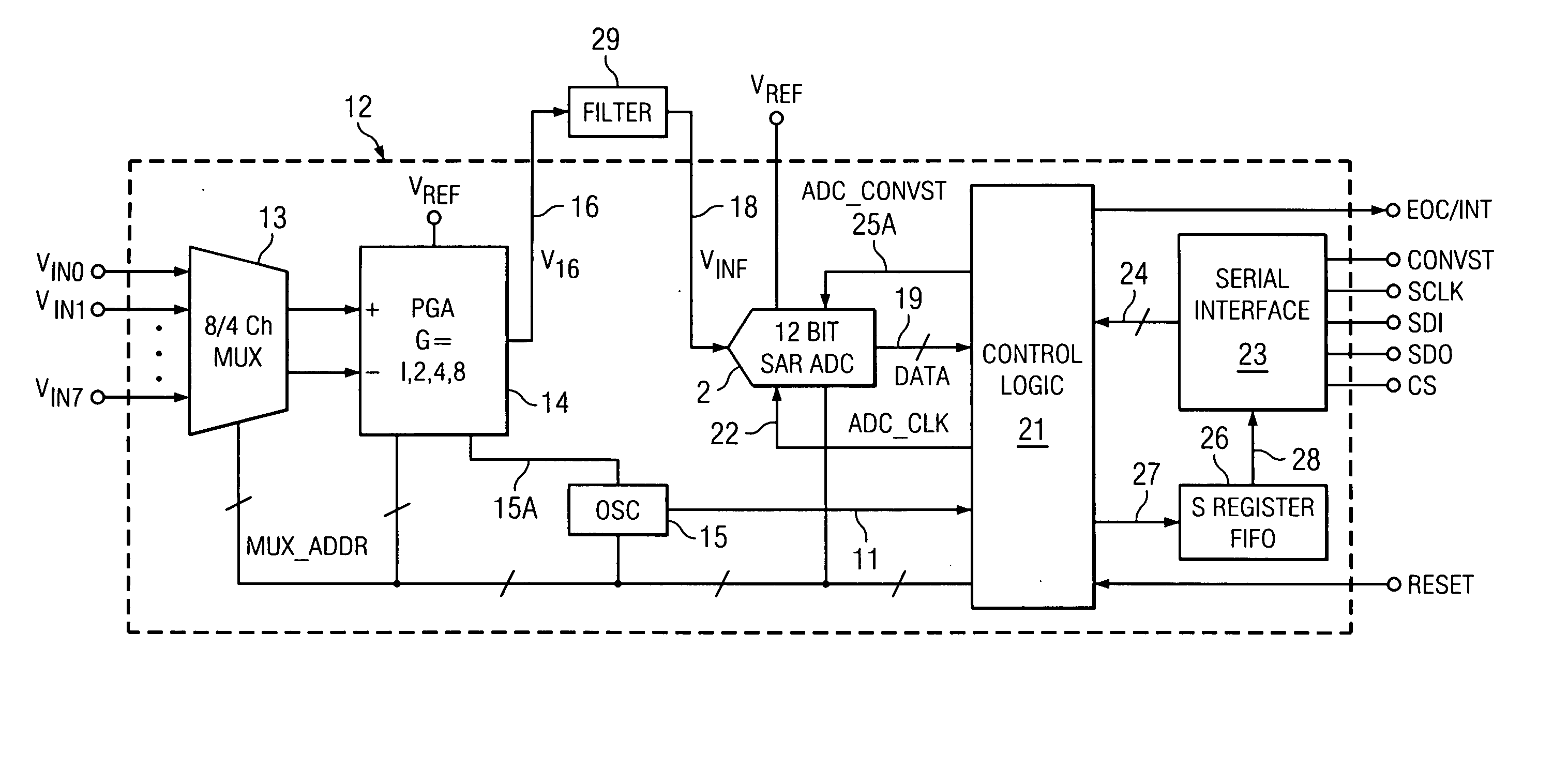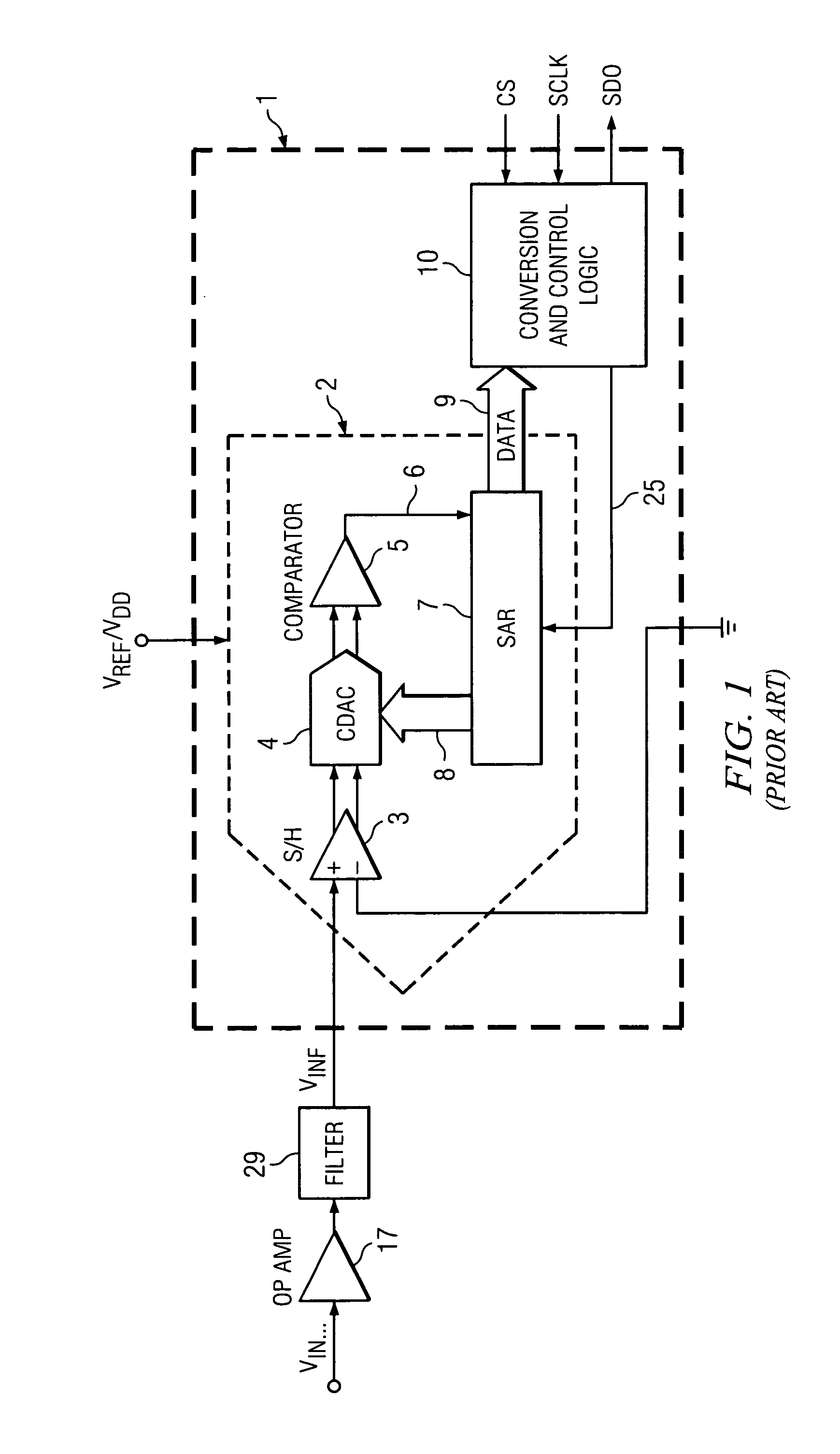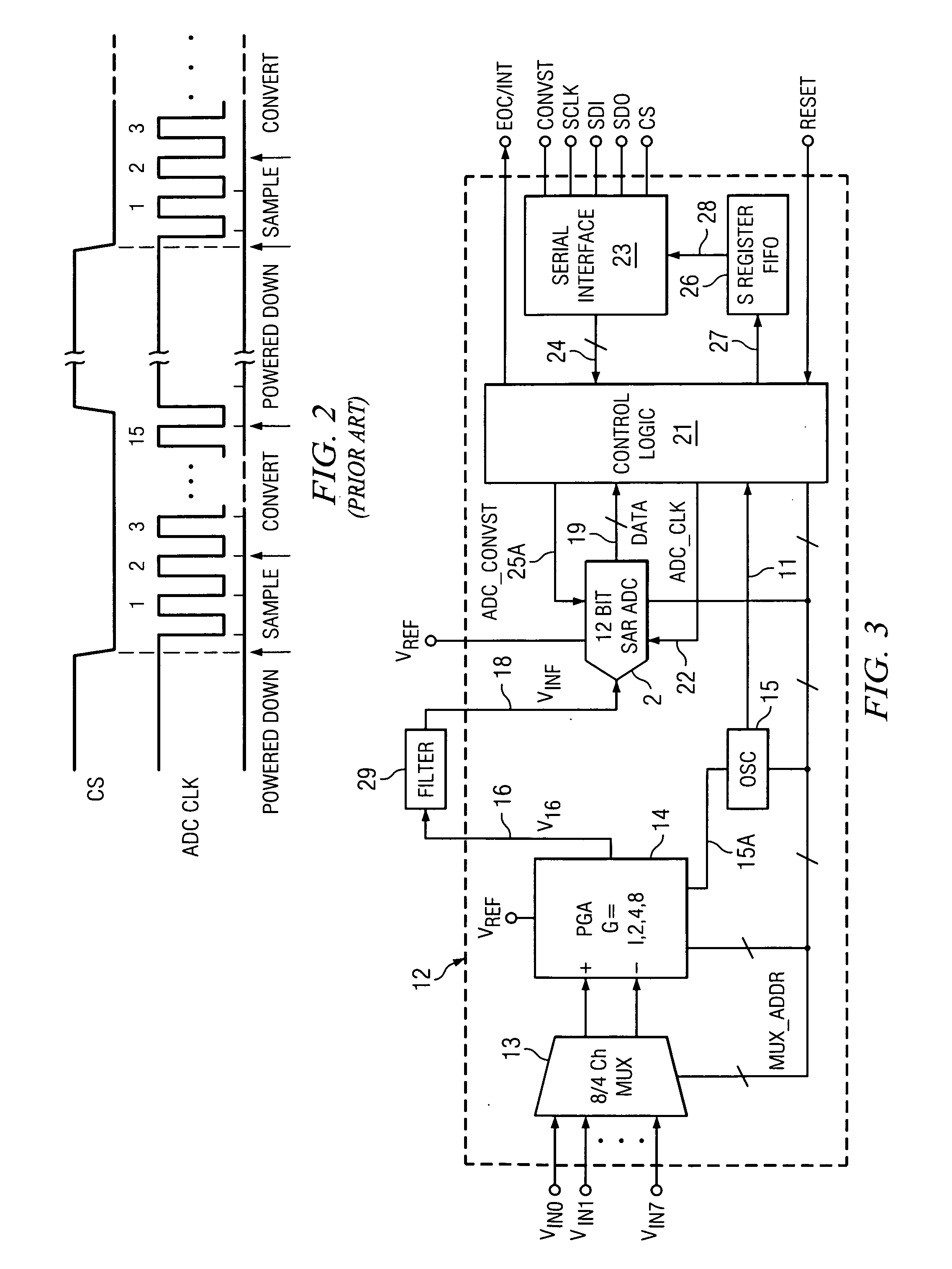[0013]It is an object of the invention to provide higher speed and lower
power consumption than has been achieved in prior art multi-channel data acquisition systems which supply analog input signals to be sampled for
analog to digital conversion, for example by means of an ADC (other than a
delta-sigma ADC), such as a successive approximation (SAR) ADC.
[0014]It is another object of the invention to provide a circuit and method for reducing the need to use a
high bandwidth, high power input amplifier to produce an analog input signal to be sampled for
analog to digital conversion in a data acquisition
system by means of an ADC (other than a
delta-sigma ADC), for example a SAR ADC.
[0015]It is another object of the invention to provide a circuit and method for reducing the need to use a
high bandwidth, high power input amplifier which supplies an analog input signal to be sampled for
analog to digital conversion in a data acquisition
system which multiplexes multiple analog input signals into the input amplifier and successively digitizes the analog input signals by means of an ADC (other than a
delta-sigma ADC), for example a SAR ADC.
[0021]In one embodiment, the invention provides a method of data acquisition including
multiplexing a first of various input signals (VIN0,1 . . . 7) in accordance with a
multiplexer address signal (MUX_ADDR) to generate a corresponding first value of a
multiplexer output signal (VIN); amplifying the first value of the multiplexer output signal (VIN) to produce a first value of an amplified signal (VINF); powering up at least a portion of a digitizing circuit (2A) for analog to
digital conversion operation in response to a
power control signal (ADC_CONVST), wherein the powering up causes a power-up glitch (42-1) to be superimposed on the amplified signal (VINF); beginning sampling and holding of the first value of the amplified signal (VINF); providing a predetermined amount of time between the power-up glitch (42-1) and a beginning of an analog to
digital conversion of the first value of the amplified signal (VINF) by the digitizing circuit (2A) to a digital representation (DATA) thereof, to allow
settling of the power-up glitch (42-1) before completing the sampling and holding of the first value of the amplified signal (VINF);
multiplexing a second of the input signals (VIN0,1 . . . 7) so as to cause it to be amplified to a second value of the amplified signal (VINF) after a beginning of the conversion of the first value of the amplified signal (VINF) by the digitizing circuit (2A); operating the digitizing circuit (2A) to convert the first value of the amplified signal (VINF) to the digital representation during settling of the second value of the amplified signal (VINF); and powering down the portion of the digitizing circuit (2A) at the end of the conversion of the first value of the amplified signal (VINF) to reduce
power consumption.
[0025]In one embodiment, the invention provides a data acquisition system (12) including means (13) for
multiplexing a first of various input signals (VIN0,1 . . . 7) in accordance with a multiplexer address signal (MUX_ADDR) to generate a corresponding first value of a multiplexer output signal (VIN); means (14) for amplifying the first value of the multiplexer output signal (VIN) to produce a first value of an amplified signal (VINF); means (21) for operating a digitizing circuit (2A) to begin sampling of the first value of the amplified signal (VINF); means (21, ADC_CONVST) for powering up a portion of the digitizing circuit (2A) for analog to
digital conversion operation in response to a
power control signal (ADC_CONVST),wherein the powering up of the digitizing circuit (2A) causes a power-up glitch (42-1) on an input (18) of the digitizing circuit (2A); means (15, 21, ADC_CLK) for providing a predetermined amount of time between the power-up glitch (42-1) and a beginning of conversion of the first value of the amplified signal (VINF) by the digitizing circuit (2A), to allow settling of the power-up glitch (42-1); means (MUX_ADDR) for multiplexing a second of the input signals (VIN0,1 . . . 7) so as to cause it to be amplified to a second value of the amplified signal (VINF) after the beginning of a conversion of the first value of the amplified signal (VINF) to a digital representation thereof by the digitizing circuit (2A); means (21,23,26) for operating the digitizing circuit (2A) to convert the first value of the amplified signal (VINF) to the digital representation during settling of the second value of the amplified signal (VINF); and means (10, 21, ADC_CONVST) for powering down the portion of the digitizing circuit (2A) at the end of the conversion of the first value of the amplified signal (VINF) to reduce
power consumption.
 Login to View More
Login to View More  Login to View More
Login to View More 


